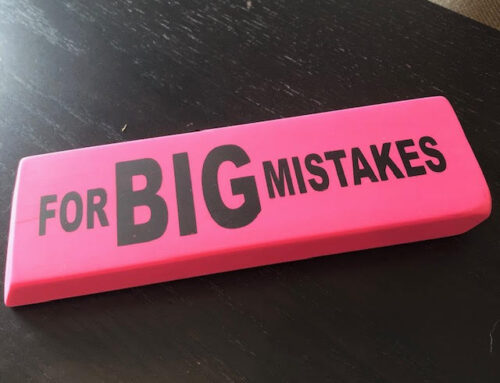Offering our recognition to those we appreciate has traditionally been reserved for annual occasions, like during a performance review or turkey dinner. Thankfully (pun intended), the surge of research on gratitude has prompted savvy leaders to show their appreciation more often.
Gratitude is a powerful way to boost performance. Research by O.C.Tanner found appreciation was the single most important driver of superior work performance. 37% of employees said more recognition would encourage them to deliver higher performance. HealthStream Research found companies that effectively recognized performance had three times greater return on equity.
Gratitude also fosters a culture of helpfulness. In a study conducted by researchers from Harvard Business School and Wharton, participants were asked to give feedback to students on their cover letters. Feedback providers were paid for their time. Students responded to feedback with either a neutral confirmation of receipt or an expression of gratitude. i.e. “I received your feedback. Thank you so much. I’m really grateful”.
Later, when students made a second request for help (outside of the study and unpaid), the percentage of feedback providers who agreed to help with a second cover letter more than doubled among the group of people who had received the “grateful” response. 66% agreed to help a second time.
Amazingly, this impact extended to other interactions. When a different student approached a feedback provider who had received a grateful response (with whom they had never interacted), participation in those instances also more than doubled. As the researchers concluded, when we feel our contributions are valued and meaningful, we are much more inclined to want to help again regardless of prior connection.
Gratitude also helps us shift our perspective in powerful ways. We end up focusing less on minor annoyances and more on growth and progress. Gratitude helps us be more content with our current state no matter how many things linger on our to-do list. Gratitude also boosts happiness, health, sleep and relationships. If we could bottle gratitude, it would surely be a blockbuster drug.
Related reading: A simple gift with a big impact
People value gratitude
One of our team members often cites the positive impact recognition had at the large law firm where she previously worked. As an example, daily, firm-wide emails acknowledged team successes, particularly when there was collaboration across departments. These emails were consistently met with a “thank you” reply and often additional words of appreciation. Even in a large, busy organization where time is at a premium, a “thank you” does not go unnoticed.
Related reading: “Thank you” emails: love ‘em or hate ‘em?
Some people don’t feel they need to thank someone else for “doing their job”. But this overlooks the value of offering our recognition, even for something we may view as part of someone’s day-to-day responsibilities. If your computer isn’t working properly and you can’t get that time-sensitive email out in time, things quickly fall apart. (It’s always a good idea to thank your friends in I.T.!)
How can we display more gratitude?
Many organizations aspire to foster a culture of appreciation, but don’t always consistently display this value. Shockingly, 65% of people surveyed felt they hadn’t received recognition over the past year. Further, only 14% of organizations equip managers with recognition tools. Thankfully, every leader has the power to change this. Actions truly do speak louder than words.
How can you exhibit gratitude at work? For starters, try a simple “thank you” even when you may not think it’s necessary. You may be surprised at how this simple action makes you feel happier. Another tactic is to catch yourself when you are mentally complaining about another person. Try to turn this thought pattern into appreciation for other skills they offer and a greater understanding of where they are coming from.
Some organizations offer formal recognition programs, and obviously we should all make good use of these. But even if your organization does not offer a formalized program, there are lots of ways you can share your appreciation. Send a hand-written thank-you note. Add a positive comment on their tweet feed. Speak up in a meeting to acknowledge your colleague. Recognize someone in the company newsletter. Treat someone to lunch in return for some great work. Offer extra training opportunities after wrapping up a big project.
Our efforts must be sincere but they don’t need to be complicated to have a big impact. Just focus on displaying gratitude as often as you can. This is truly the gift you want to generously offer.
Over to you!
Now we’d love to hear from you in the comments below. What are your thoughts about gratitude? And hey, if you appreciate what we had to say, please share! There is no time like the present to practice gratitude. Thank you!








Leave A Comment